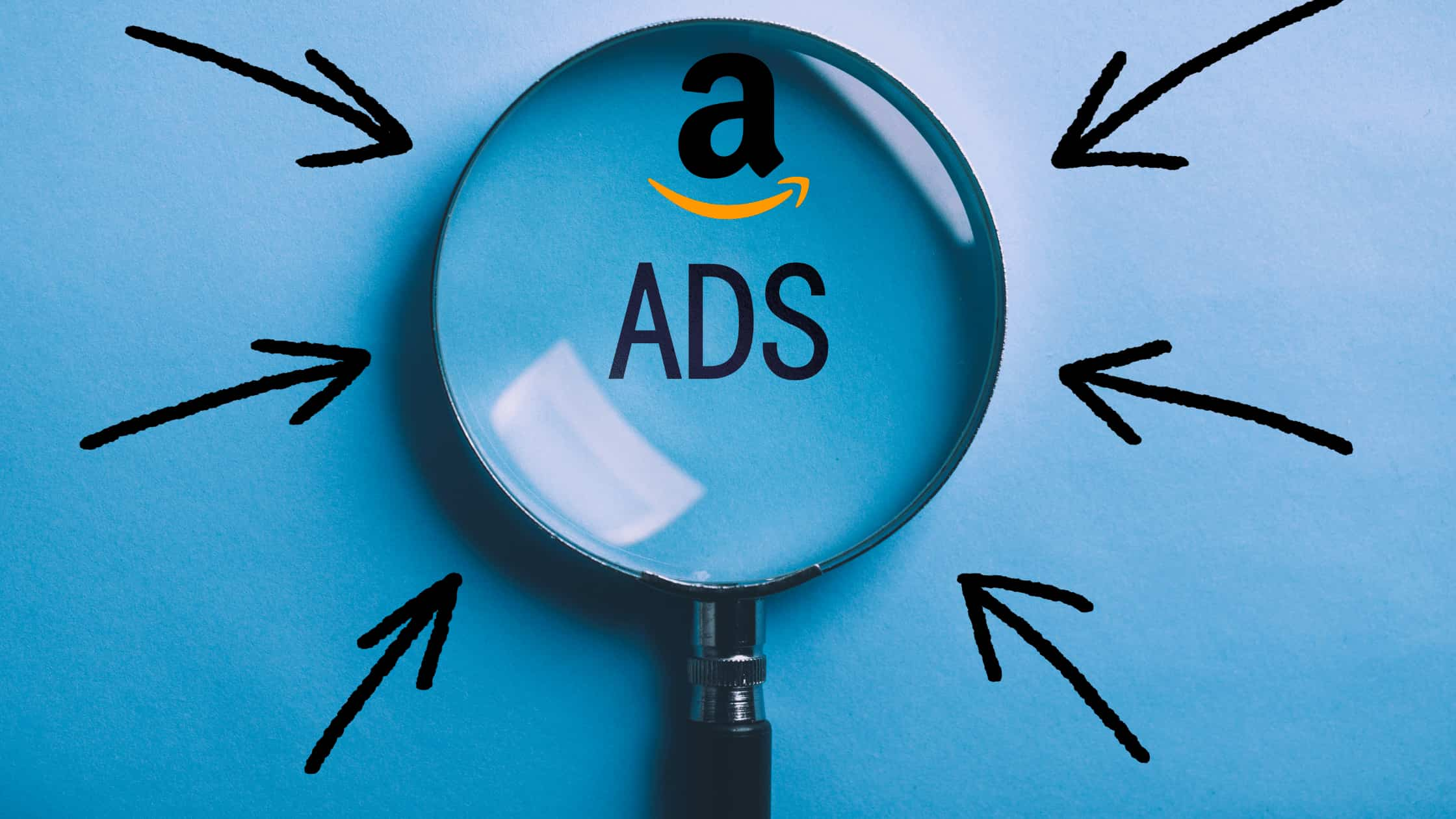If you're struggling to maximize your ad spend on Amazon, rest assured you're in the right place. Amazon Ads Management involves handling your advertising strategy on Amazon's marketplace to enhance product visibility and drive sales more effectively.
Effective management is key to not only increasing visibility but also staying competitive in a crowded marketplace.
It helps reduce costs through strategic bidding and targeted ad placement, ensuring that your products are seen by potential customers who are already searching for items like yours.
Interested in setting up your advertising campaigns in Seller Central or optimizing your current ads? Stay tuned as we unlock the potential of Amazon Ads Management for your business.
Importance of Managing Amazon Ads
Effective Amazon Ads management is critical to maximizing the potential of digital advertising on one of the world's largest online marketplaces.
A well-managed campaign can increase brand visibility, optimize advertising spend, and keep you ahead of the competition.
1. Increase Brand Visibility
By leveraging Amazon's robust advertising options, such as Sponsored Products, Sponsored Brands, and Sponsored Displays, you can significantly enhance your products' visibility.
Your brand can gain traction by appearing in prominent locations on search results and product pages, driving more traffic to your listings.
-
Targeting Types: Use keyword targeting for Sponsored Products and product targeting for display ads to reach relevant audiences.
-
Ad Placement: Utilize video and audio ads for a multimedia approach to capture customers' attention.
2. Reduce aCos and Improve RoAS
Efficient management of Amazon ads means aiming for a lower Advertising Cost of Sale (aCoS) and improving Return on Advertising Spend (RoAS). This involves:
-
Setting Clear Campaign Goals: Understanding your objectives influences your bidding strategy and the types of ads you run.
-
Keyword Management: Create different ad groups for keywords with varying specificity and include negative keywords to filter out unproductive traffic.
Also, read our guide:
3. Stay Ahead of Competition
Staying competitive on Amazon is a moving target that requires constant advertising strategy adjustments. This includes:
-
Portfolio Management: Monitor and adjust your portfolio frequently to respond to market changes and competitor strategies.
-
Ad Fatigue Awareness: Rotate ads and refresh creative materials to keep campaigns fresh and maintain user engagement.
4. Achieve Advertising Goals and Objectives
To hit your advertising targets, it is crucial to identify your goals and tailor your campaigns accordingly. This encompasses:
-
Amazon Seller Central Steps: Navigate through Seller Central to set up and manage your campaigns with precise control over daily budgets, targeting, and bid amounts.
-
Retargeting: Implement retargeted ads to recapture the interest of users who have already engaged with your brand, increasing conversion rates.
Amazon Ads Management Best Practices
Mastering Amazon Ads management is critical for sellers to optimize their ad spend and increase the visibility of their products. Implementing best practices enables you to run efficient campaigns and stay ahead in a highly competitive market.
1. Identify Your Advertising Goals
To maximize the impact of your Amazon Advertising efforts, you must first identify clear, quantifiable goals.
Whether your aim is to increase brand awareness or drive sales, these targets will guide your budget allocation and campaign strategy.
2. Target the Right Audience
Craft your campaigns with a clear understanding of who your target audience is.
Utilizing Amazon's targeting features allows you to direct your ads to consumers who are most likely to be interested in your ASINs, optimizing your ad spend toward better results.
3. Invest in Amazon Ads Management Tools
Investment in reliable Amazon Ads management tools can significantly enhance your ability to handle large product catalogs efficiently.
Automation features help manage bids, adjust budgets, and streamline campaign oversight.
4. Create Different Ad Groups and Keywords and Do Tests
Divide your products into ad groups and create a robust keyword strategy to ensure precise targeting.
Perform A/B testing to identify which keywords and ad groups yield the best performance metrics.
5. Monitor Ads Performance
Regular monitoring of campaign metrics is essential.
Tracking performance enables you to make informed decisions on budget optimization and to adjust bidding strategies for sponsored brand campaigns.
6. Check Ad Fatigue
Stay vigilant for signs of ad fatigue, where the target audience's response diminishes over time.
Refresh your creative elements and review your keyword strategy regularly to sustain audience engagement.
7. Run Retargeted Ads for Conversions
Retargeted ads on Amazon can increase conversions by re-engaging shoppers who have shown interest in your product detail pages.
By focusing on these potential customers, you can efficiently boost sales.
8. Work With a Trusted Amazon Ad Agency to Boost Sales Performance
Partnering with an experienced Amazon ad agency can maximize sales performance.
An agency brings expertise in account management, campaign creation, and ongoing ad group optimization, allowing you to focus on other aspects of your business.
You can boost your sales by teaming up with a reputable Amazon ad agency like Scale Insights, known for its expertise in meticulous account management and creating high-yield ad campaigns. With their dedicated focus on continual ad group optimization, you can confidently direct your attention to other growing business areas.
Partnering with Scale Insights means entrusting your Amazon ad campaigns to a team of seasoned experts who prioritize your success. Their deep understanding of the Amazon marketplace, combined with innovative strategies and tools, ensures your ads are optimized for maximum efficiency and profitability. Scale Insights' commitment to constant improvement and personalized service allows you to expand your business while they handle the complexities of PPC management. With Scale Insights, you're not just hiring an agency; you're gaining a partner dedicated to propelling your business forward.
Managing Your Amazon Advertising Account
Effectively managing your Amazon Advertising account involves a comprehensive approach to account settings, making use of bulk operations, and competently navigating Seller Central.
Your success hinges on understanding these components to streamline your advertising process, reduce costs, and enhance visibility among a competitive marketplace.
Account Settings
Your account settings are foundational to advertising account management. Here, you can oversee your billing preferences and user permissions.
To adjust these settings, navigate to the Amazon Ads console and access the account drop-down.
It's vital to ensure that your payment methods and taxes are up-to-date to avoid interruptions in your campaigns.
-
Billing and Payment Methods: Regularly verify and update your payment information.
-
User Permissions: Assign roles and access for team members managing your advertising campaigns.
Bulk Operations and Tools
Leverage bulk editing tools to efficiently manage multiple campaigns at once.
These tools are designed to save time by allowing you to update bids, adjust the budget, and fine-tune campaign settings in a single action.
Conducting bulk operations can be crucial for advertisers who manage a vast array of products across different campaigns.
-
Access Bulk Operations: Use the 'Bulk Operations' feature within Seller Central for rapid adjustments.
-
Campaign and Portfolio Management: Organize your campaigns by creating portfolios for enhanced campaign management. Portfolios can be grouped by product category, brand, or advertising strategy.
Navigating Seller Central
Seller Central is your command center for creating, managing, and optimizing your Amazon advertising campaigns.
To start a new campaign:
-
Go to the 'Campaign Manager' in Seller Central.
-
Click 'Create Campaign' and enter your campaign name.
-
Choose automatic targeting for ease or manual targeting for control.
-
Assign your campaign to an existing portfolio or create a new one.
Here's how to navigate through the campaign setup process:
1. Campaign Name: Use a descriptive name for easy tracking of campaign performance.
2. Dates & Budget: Determine the campaign's start and end dates, and set your daily budget.
3. Targeting: Choose automatic or manual targeting to meet your advertising goals.
4. Bidding Strategy: Decide on your level of competitiveness in the ad auction.
5. Ad Group Name: Use clear names to organize your products into ad groups.
6. Product Selection: Select products from your catalog that you wish to advertise.
7. Bid Set: Set your bids for the chosen keywords or products.
8. Keywords: Pick which keywords to target or exclude from your campaign.
9. Save & Finish: Ensure all settings are correct before launching your campaign.
Additional Amazon Ad Solutions
Expanding beyond basic sponsored product ads, Amazon offers a range of specialized ad solutions to help you refine your advertising strategy and connect with customers. These advanced tools can enhance your ad campaigns' visibility and effectiveness.
Exploring Sponsored Display Campaigns
Sponsored Display campaigns allow you to position your ads both on and off Amazon to reach broader audiences. These campaigns use:
-
Automated bidding: Positions your ads to potential buyers who have viewed similar products.
-
Ad placements: Your ads could appear on product detail pages and across Amazon's third-party sites and apps.
Utilizing Amazon DSP
Amazon Demand Side Platform (DSP) is a powerful digital advertising platform that helps brands:
-
Programmatic buying: Access to exclusive Amazon audiences for both display and video ads.
-
Managed-service option: If your budget allows, you can work with an Amazon Ads account executive for tailored campaign strategies and a minimum spend of $50,000 (USD).
Amazon Store and Video Ads
Complementing traditional ad campaigns, Amazon Store and Video Ads offer immersive ways to engage customers:
-
Amazon Store: Create a branded storefront to showcase your products and brand story uniquely.
-
Video Ads: Capture attention with video content on Amazon's owned sites like IMDb, devices like Fire TV, and across the web.
Conclusion
Managing your Amazon ads effectively is crucial for standing out in the competitive market. Strategic campaign setups and continuous optimizations are key to cutting costs and increasing product visibility, giving you an edge. You establish a systematic advertising method on the platform by implementing best practices in Amazon Ads Management.
You ensure tighter control over your ad spend by taking a detailed approach to campaign creation in Amazon Seller Central, from naming to bidding. Maintain well-organized ad groups and choose keywords deliberately. These tips will help optimize your ad campaigns for the greatest impact and investment return.
Frequently Asked Questions
How does Ads Manager work?
Ads Manager is a tool for creating, managing, and analyzing advertising campaigns. It allows advertisers to set up campaigns, define target audiences, choose where ads will appear, and set budgets and bids. Performance metrics are available to track the success of your ads, enabling ongoing optimization based on data.
How much does PPC management cost?
PPC management costs can vary widely based on the agency or tool you choose, the complexity of your campaigns, and the size of your ad spend. Agencies might charge a monthly retainer that ranges from a few hundred to several thousand dollars or a percentage of your ad spend, typically ranging from 10% to 30%.
How much should I spend on Amazon PPC?
Your Amazon PPC budget should align with your overall sales goals and advertising strategy. As a rule of thumb, starting with 10% of your projected sales revenue for PPC spending can be a good launching point. As you analyze your campaign's performance data, adjust your budget to optimize for the best possible ROI.
Where do Amazon ads run?
Amazon ads can appear in several places, including search results on Amazon, product detail pages, the Amazon home screen, and other Amazon-owned sites and platforms. They can also run on external websites and apps as part of Amazon's advertising network.
What is the best time to run Amazon ads?
The best time to run Amazon ads can depend on several factors, including your specific product, industry trends, and customer shopping habits. However, high-traffic periods like holidays, Prime Day, or other sales events can be particularly effective times to increase ad spend for greater visibility and sales. It's also useful to run ads consistently to collect data and optimize performance.



 Scale Insights Team
Scale Insights Team


